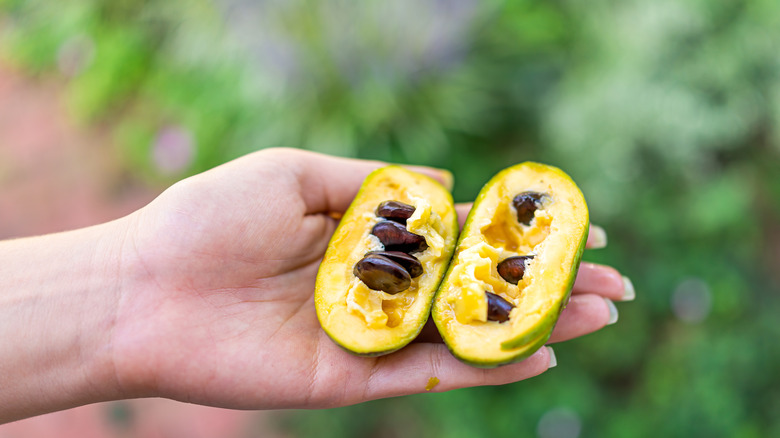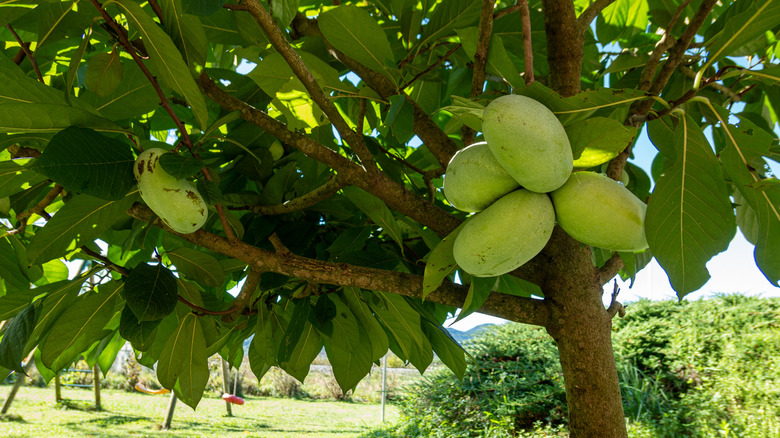The Largest Edible Fruit In North America Is One You've Probably Never Heard Of
Pawpaws are one of the most interesting fruits you've never heard of. Also referred to as the "Appalachian Banana" or "Poor Man's Banana", this forgotten fruit is found on the East Coast and in the Midwest, ranging from southern Canada to Florida. Growing wild in 26 states, you may have walked alongside one of these trees without even noticing. Averaging about the size of a large potato, with the largest varieties weighing over a pound, pawpaws happen to be the largest edible fruit native to North America.
This fruit belongs to a tropical fruit family called custard apples, with other tropical fruits like soursop and cherimoya. Pawpaws have a tropical flavor that resembles a mix of banana, papaya, and mango, with a creamy, yellow, custard-like texture. If you're able to get your hands on the fruit fresh, it is best to first try it on its own for a unique tasting experience. If you're lucky enough to have an abundance of pawpaw, there are plenty of ways to use it. Ice cream is easy to make, even without a machine, and the flavor and creamy texture of pawpaw work really well in it, as well as in sorbet or pudding.
Pawpaws are not a new fruit. Before the rise of industrial agriculture, people who depended on wild foods as part of their diet were more acquainted with this fruit. It was a part of the diet of Native Americans, and Lewis and Clark reported eating a lot the fruit when supplies were low on their westward expedition in 1806. Thomas Jefferson was a huge fan of the fruit, and grew trees himself.
Where to find pawpaws
If you're expecting to stroll down to the closest supermarket looking for pawpaws, you won't get so lucky. These forgotten fruits are next to impossible to track down in regular grocery stores. One reason is that they become ripe and can perish quickly. Once picked, the fruit lasts for only three to five days at room temperature. Pawpaws are not grown commercially like other fruits in North America — they are mostly hand-harvested and foraged in the wild. While agricultural programs are working towards making pawpaw production more scalable, there are currently only a handful of producers that have small pawpaw orchards.
The best bet for finding fresh pawpaws are farmers markets, produce co-ops, and specialty grocery stores in the Midwest and eastern United States. Pawpaw season runs from August to October, so if you see them, seize the opportunity and buy a few. There are a few online produce vendors that sell fresh pawpaw or frozen pawpaw pulp to be shipped straight to your home, but this option tends to be expensive due to the need for expedited shipping.
If you live in one of the areas where pawpaws grow in the wild, you might try your hand at foraging to enjoy along with any other food you might eat while hiking on a trail. Or, if space and patience permit, there are plenty of places to buy plants and seeds online, so you could get some pawpaw tree seeds of your own to grow.

